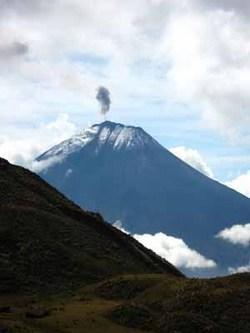Magmas are formed by partial melting of silicate rocks either in Earths mantle or the continental crust, which in turn forms part of the continental crust and the entire oceanic crust.
Types of magma generation
Subduction of oceanic crust eventually leads to rising magma bodies. This results in the formation of a linear chain of volcanoes known as volcanic cordilleras above the subduction zone in continental or oceanic arcs (e.g., the volcanic Andes, Japanese islands, Lesser antilles, Aleutians, Kamchatka). Hot-spot volcanism produces submarine or subaerial volcanic chains such as the Galapagos archipel (with the associated Carnegie and Cocos Ridge), Hawaii (with the Empereor seamounts), or Yellowstone (with the Snake River plain).
Besides these two principal types of magma generation, magmatism along rift zones shall be also taken into consideration.
